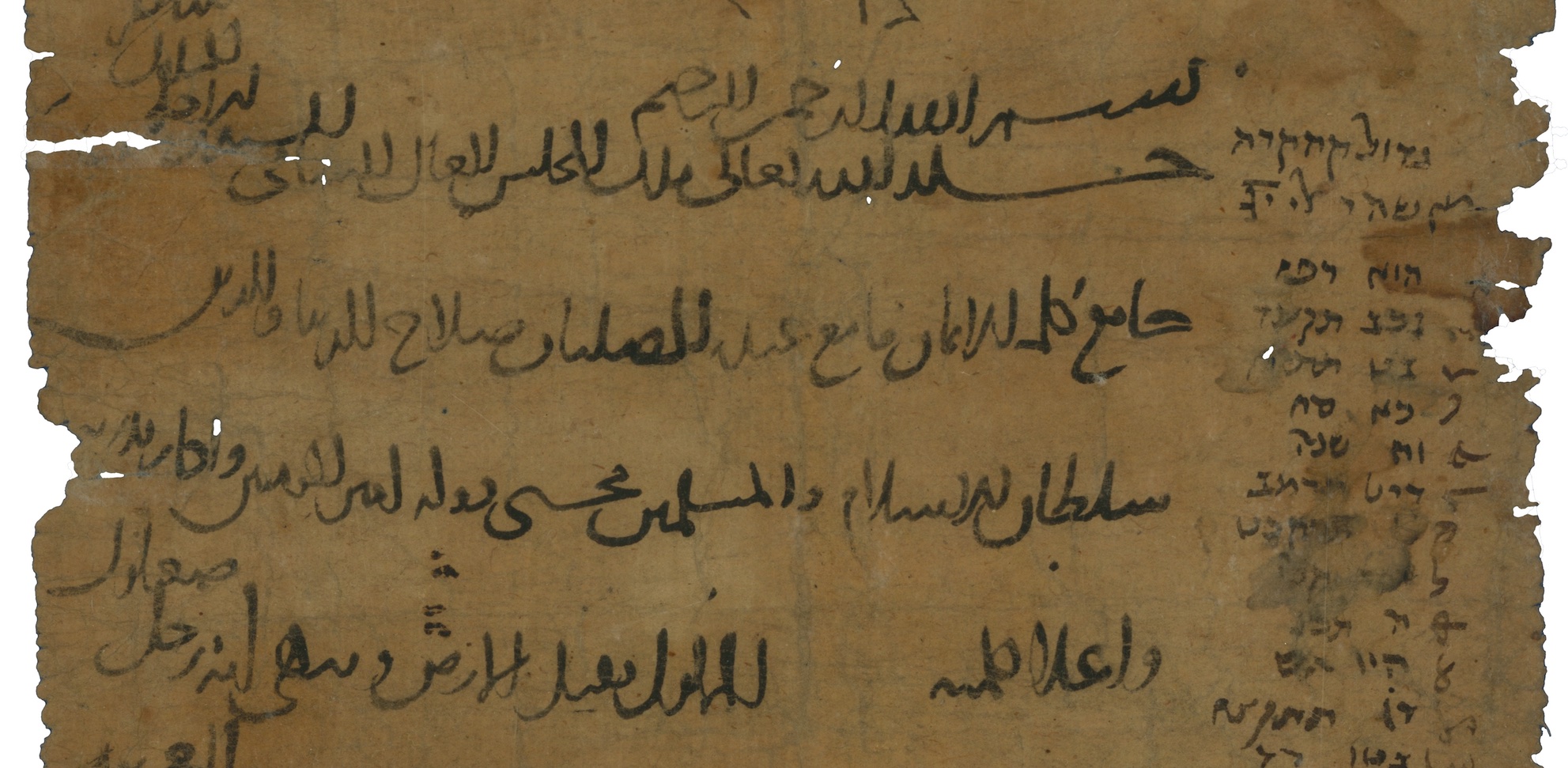Throwback Thursday: Chancery deeds

Detail from T-S K2.96 (verso): a twelfth-century chancery document which contains lines of a petition addressed to Saladin concerning forced government service.
Thu 25 Nov 2021
Our Throwback Thursday this week is taken from issue 56 of the printed edition of Genizah Fragments, published in October 2008, by Marina Rustow:
No one has satisfactorily explained why the Cairo Genizah preserved Arabic texts from the Fatimid, Ayyubid and Mamluk chancery (dīwān al-inshā), the bureau charged with, among other tasks, receiving petitions from Egyptian and Syrian subjects and issuing decrees in response to them. To date, 135 such documents have been published – a few in the 1950s and ’60s by the Genizah pioneers S. D. Goitein and S. M. Stern and, more recently, a large group by Geoffrey Khan in his Arabic Legal and Administrative Documents in the Cambridge Genizah Collections (Cambridge University Press, 1993). Their discovery is significant since it belies the oft-repeated notion that few government documents have survived from the pre-Ottoman Near East. While medieval Europe preserved Latin documents as evidence of privileges granted by rulers, and while the Ottoman bureaucracy created a paper trail that will take scholars centuries to map, the medieval Near East – so the lament runs – is “document-poor.” This is, however, far from true. In addition to tens of thousands of Arabic papyri from Egypt preserved in Vienna and elsewhere, there is an as-yet unknown number of Arabic chancery documents in Cambridge and other Genizah collections. The manuscript repository of a synagogue is hardly a place to locate a large cache of Egyptian chancery documents. But since the Fatimids (969–1171) relied heavily on the process of hearing petitions in open court as an instrument of rule – a procedure the Ayyubids (1171–1250) and Mamluks (1250–1517) retained and developed – one might well have expected to find petitions submitted to the chancery by Jews, and copies of the decrees issued in response, among the Genizah documents. Some chancery documents from the Genizah do indeed concern Jews – but only some. A significant number relate to Muslims or Christians, and still others are directives sent from one government bureau to another. Their preservation raises the question of how they migrated from the palace in the new city of Cairo to the synagogue of the Syrians in Fustat, a point I am seeking to answer by studying dozens of such documents in Cambridge and elsewhere. Both Stern and Khan have suggested that Jewish courtiers may have brought the documents to Fustat’s Jews, an explanation that works particularly well for the Fatimid material. Several Jews known from Genizah documents served the Fatimids as palace bureaucrats (kuttāb), physicians or local governors in Syria. Petitions follow set formulae. They may have wished to provide Jewish community leaders with model documents that could be used in seeking the protection of the rulers in Cairo. Those formulae, moreover, developed over time. Synagogue leaders would have kept old petitions on file as templates and retired them when a new ruler was declared, or when the formulary was so changed as to render the old petitions obsolete. They would then have been discarded in the Genizah chamber, together with other outdated archival material in Hebrew, Aramaic and Judeo-Arabic. While that explanation works well for petitions, the decrees suggest another route. A surprisingly large number have reached us with Hebrew script on the verso – frequently biblical or targumic passages written for practice by novice scribes. These suggest that they were pressed into service as scrap. Indeed, decrees tended to be written on large and sumptuous pieces of paper with wide spaces between the lines, thus lending themselves particularly well to reuse. This scenario accords with a recent discovery made by Frédéric Bauden at the University of Liège – a notebook in which the Egyptian historian al-Maqrīzī (1364–1442) embedded a pair of decrees from the Mamluk sultan al-Nāsir Ahmad (1342–45). According to Bauden’s reconstruction, a group of amīrs in 1389–90 overthrew the reigning sultan, forced him from Cairo, raided the palace and sold the chancery archives by weight. Al-Maqrīzī, who had worked in the chancery until a year earlier, was in a position to know about the raid and to take advantage of its booty. Meanwhile, the price of paper in Egypt had risen enough to make buying recycled paper a necessity for many. The annals of Fatimid history, too, are filled with accounts of raids on the palace by warring military regiments, and it may well be that what Bauden describes for the fourteenth century occurred repeatedly from the eleventh to the sixteenth. Thus young scribes ended up practising their Hebrew and Aramaic exercises on the backs of precious decrees from the chancery in Cairo. These documents permit the reconstruction not just of one lost archive but of two, and are a precious resource for historians of the medieval Near East.
Add new comment